-
Posts
768 -
Joined
-
Last visited
Content Type
Forums
Detector Prospector Home
Detector Database
Downloads
Posts posted by Jim in Idaho
-
-
I got a good laugh at that, Jason...thanks. I'm using the 32 bit version of Res2dinv. And yes...one reading at a time and then moving probes...makes me tired and bored just thinking about it. I'm going to buy enough material to make about 60 probes, so I can put them all in at once, and then just go from reading to reading...should be much faster, and more importantly "less boring"....Ha!
Jim
-
-
9 hours ago, GotAU? said:
This is an interesting paper on how it was used for a gold mining operation- they used it to find additional potential lode deposits near an inactive mine by taking measurements along three parallel lines, and were using quite an expensive professional grade unit with multiple sensors arranged in an array- much like the geophones used for seismic studies.
https://www.scielo.br/j/remi/a/NP37ZfKM4yFkFrLYtCXSq8c/?lang=en#
I guess in your case Jim, we’re you running a line by hand with just 2 probes? Could you share a bit more about your setup?LOL...I'd love to have one of those 3d units. I could buy a 3d version of the 2d software I'm using, but too spendy for this poor Idaho guy...Ha! The engineer I was training can do 3d CAD, so by running lines at 90 degrees can input the GPS results and build a 3d image. I was using 4 probes. Two pairs of two. I chose a spacing on the probes in each pair as 1 meter. The distance between the inner probe of each pair should be an integer value of the probe spacing. I started at 2 meters, and did a layout for 4 meters and 6 meters, but we never did the 6 meter in the field. I only had the 4 probes, so we had to keep moving the probes as we went along the 50 meter line. very slow, boring work. It would be better to have 55 or so probes and install them along the line and then just go from one to another, according to the desired layout. That would be faster, but it's still a slow process. When I was doing it in Nevada I was down there for 8 days, and working 8 hours/day, and then inputting data in the evening. The more modern (but expensive) units use a separate cable to each probe, and then you push "start", And it automatically, and electrically goes from probe to probe collecting the data....much nicer....LOL
Jim
-
One thing I forgot to mention, GB...you can go as deep as you want, providing you have enough voltage to drive enough current through the current probes so you can see a voltage at the voltage probes. I usually use what's called a Dipole-Dipole array. in that array you have two sets of probes. The distance between the probes in each set have to be the same. One set you apply power to. The other set you read the voltage across. The distance between sets determines the depth you are reading. With this type of array, the depth is equal to half the distance of the center-to-center distance between probe pairs. We used 2 meters and 4 meters, and 1 meter between probes in each set. Add 1 for the 1/2 meter to the center, and we had 3 meters and 5 meters. so depth was 1.5 and 2.5. The software massages it a little so we ended up with an indicated 2.36 max. We could have done another layer at 6 meters, but were worn out, and thought we had enough info to determine what we wanted. Doing this is boring as hell, and a lot of work, if you don't have a fancy commercial unit. And, as you know, I like to build my own stuff.😁
Jim
-
7 hours ago, GB_Amateur said:
Your plot appears to show us the depth range of 1.17 m to 2.3 m. Does your detection device show anything from surface down to 1.17 m? Also, does this measurement now answer your question as to how the copper got there?
There are issues with depths of less than a couple of meters. Mainly caused by surface distortion of the electrical field, and surface moisture. It did answer our question as far as we now know there are no conductive intrusions within the search zone. So, either the metal indicators were deposited in those place where found, or they may have eroded from an uphilll source, and moved down the hill. There are several prospect pits uphill of where we did the test. That particular spot was never commercially mined...just prospected. But it does have indications of copper.
Jim
-
57 minutes ago, Kostas 13 said:
I bought a professional resistivity meter to locate caves, while the principle of operation is relatively simple, the interpretation of the readings requires maps of the geological area and knowledge of the resistivity of the materials found underground. my opinion is that in order to have a good interpretation of the data there should be a professional geophysicist or we should have intensively dealt with this method at a theoretical and practical level otherwise we risk reaching the wrong conclusions.
I've been using this for several years now, and find it a useful tool in my prospecting. Is it perfect?...No. But, I see no need to have a trained geologist on hand, though in this particular case, I was training a mining engineer.
Jim
-
I thought some of you guys (or gals) might find this interesting. To go back about 4 years...I started looking into resistivity because of the 2.2lb hunk of mearly pure copper I found in northeast Nevada. I'm still convinced there's a large lode there somewhere. So jump to now, and I had mentioned to an online friend last fall that I had used Resistivity down there, and had some, but limited experience with, but I'd built a power supply, and a system to work with a free 2d software package. He asked me to come up to the Helena area where he has several claims, and teach him how to use the system. So, Friday Chris and I loaded the Casita andm headed north. Saturday we went to one of his claims in the Marysville area. The metals, mostly copper and gold, in this area come either from quartz veins or are ancient pockets of sedimentary deposits. We wanted to determine if the oxydized copper we were finding on the surface came from a quartz vein, or were pockets of debris from farther up the hill. The image attached is what the software kicked out after we took 48 readings. Those 48 readings took the 4 of us about 6 hours to do, and then I spent another couple of hours doing the math so I could input the data in a form the software would accept. We only went to a depth of about 3 meters, as were trying to determine if there were rising quartz veins below the oxydized copper they'd been finding. In the image, the light blue is the low-resisitvity rock, and is what we want to see. The green/yellow is broken rock and overburden of various densities, and the orange/brown and deep blue/purpler is the undisturbed bedrock. You can see the pockets containing the oxydized copper they'd found, and you can also see they don't extend below about 5' of depth (1.5 meters). We covered about a 50 meter distance along an access road cut into the hillside.
-
Good on ya, buddy!
-
WOW, Gary, you been killin' it! Best wishes on a speedy recovery from your surgery. We're just starting to get out here, after the long winter. Still waiting for the rain to pass before heading to Wyoming.
Jim
-
11 hours ago, phrunt said:
That's pretty cool, nice to see nature doing it's thing. How can you tell the males? Did he have his ding dong hanging out?
And the big question, did you find any meteorites? That's on my bucket list although I doubt I'll ever find one around here.
Simon, we weren't really looking for meteorites. Just looking for indications of gold. The crater is enormous...some Geo's claim 100 miles across, but most say about 40. The Great Basin is the only one bigger in the US. There is very little evidence of it remaining. Only a Geo would recognize the indicators. It was discovered about 30 years ago. The center is about 8 miles west of where we camped off US 93. All that said, I'd really like to find a fragment of it. We did locate an old placer location that had Lead, silver, gold, and barite/barium. We'll be going exploring in the canyon above that later this year, hopefully.
Jim
-
11 hours ago, JCR said:
Good sized pair.
Nothing like the ones you guys have down there...thank God.....LOL
-
From what I've been able to learn, the males have the black and white bands, for a couple of inches, ahead of the rattle, The females lack that banding. You also might notice, it looks like the male had recently shed its skin. The female is much duller in color. They generally mate shortly after leaving the winter den...that's why I figured a den was nearby, and there would be more of them in the vicinity.
Jim
-
Chris and I spent a few days poking around a portion of then perimeter of the second largest known US meteorite crater. (Beaverhead Impact Crater) On the way back to camp one afternoon, we saw a sign for Malm Gulch about 9 miles west of Challis, Idaho. Malm is famous among geos' for its ancient petrified Sequoia stumps, which can be as much as 8' in diameter. The elevation is about 5,600', and the temp was about 75, so I knew the snakes might be out. I was alittle worried about Heidi, but we hiked on in the 1 1/2 miles. As I turned into the4 final small dry gulch, there was a knee-high shelf in the wash, and as my eyes rose up there was a small pile of rattlesnakes, At first, I thought it was one really large snake, but as I looked, I realized it was two snakes. I assume they were mating, as there was one male and one female. The female got quickly hostile, and never did calm down. The male never budged, or rattle...maybe post-coital bliss, or fatigue...LOL. Thank God Heidi was not out in front as she usually is, and Chris was able to get her corraled. We decided to beat feet back to the rig. I could get by the snakes, but we were obviously near a den area, and I didn't want to risk Heidi being bitten by a snake we didn't see. You guys be careful out there. The male snake is on the right.
Jim
-
Bill, I think the advantage was better coverage under the coil, especially for really small gold. You are correct about getting around the patent. Now we have the spiral-wound coils which accomplish the same thing. Apparently lots of ways to skin that cat. That said, I have both a 7 1/2DF, and a straight mono 8 x 6 Sadie, and can tell very little difference between them, though if I had to choose, I'd give the very slight edge to the DF, thoughit might be my bias showing...LOL
Jim
-
I did a bit of research and answered my own question. So, for clarification for people who aren't as dumb, or inquisitive as I am here's what I wanted to be sure of. All PI's use a single coil for both transmit and receive. But, and it explains my confusion, that single coil, for both purposes, may be divided up into several coils, or even more than one circuit, inside the detector. That was the basis for my confusion regarding the use of the term "mono" when it comes to differentiating the various coil types. It's interesting the Reg Sniff called his design a "folded" mono. Electrically, there's little difference between that and White's DF design. They both use that one circuit to the coils to accomplish both Trans, and Rec.. but both divide that coil circuit into separate coils.
Jim
-
I understand the difference between a DF and standard mono. Maybe I phrased my question wrong. What I'm confused about apparently, is the difference between true mono's and most others. Another question is "are the DF's just another form of mono?
Jim
-
2 hours ago, Steve Herschbach said:
People confuse coils a lot and the dual field is a unique coil so even easier to confuse. The guy may have honestly thought he was selling you a mono.
Here's a question for you, Steve. Does the TDI setup use separate transmit/receive coils, or do they use a single coil for both functions? I'm assuming, if they use a single coil for both, than the DF coils are simply a mono coil that splits the mono into two separate coils wired in series.
Jim
-
Sadly, Jason, I don't remember how I found that. Might have been simply visually, or running the jig, or using the saruca, or possibly while surveying anthills, of which I did about 600. I know, within a few miles, where I found it, however. But, I've never seen another one until your post. I use both a "Way TOO Cool" brand 18 watt UV light that has both long wave and short wave. Each light is 18 watts, but it draws considerable power.....about 4 amps with both bulbs on. The other I have is a mini-flashlight that is longwave only. It has an LED bulb. Unfortunately, they've yet to figure out an LED light that produces true shortwave UV light. The good thing for us is most gems that fluoresce do so in long wave, or stronger in LW, including rubies. Unfortunately for me, I'm in the 30% of the population that gets sick from using a UV light. I wear goggles that help, but even then I can only go about an hour, or a little more before getting nauseous. After your post, you can bet I'm going to be looking at the jig tailings under a UV light before throwing them out.
Jim
-
Yeah...I noticed the hex in the pics, too. Don't know why I didn't notice that before. The Grossular garnets are the only ones that fluoresce, and I'm not sure all the colors of them fluoresce. I'm thinking tsavorite grossulars don't. I need to look that up. I'm thinking, because of the nearly identical colors, that both of our gems may have come from the same source. Hausel mentioned a creek in the Wind River range that had rubies. I forgot to post this, so after some research it looks like the only grossular garnets that fluoresce are from Quebec, and Tanzania, and are clear under natural light, so mine probably is a ruby....COOL!..Thanks, Jason. Now I need to go down in the gem room, and try to find it....LOL
Jim
-
-
That is super interesting, Jason. A few years ago, while diamond prospecting in the Green River Basin, I found an identical gem. It was tiny, and pink in natural light, but brilliant, and I mean brilliant red under short wave UV light. Yours is the only other one I've seen. I had decided mine was either ruby, or a grossular garnet, though I leaned toward garnet. You made my day posting that. I wish we could figure out the source location.
Jim
-
Simon, I doubt the coil would work on both, assuming their frequencies are different, unless the freq of one is a harmonic of the freq on the other. Having never owned either, I have no idea. I know the freq of the GK is in the neighborhood of 65hz. I sorta would like to come into a GK, at some point in the future, so I'm glad they'll keep making them.
Jim
-
Was that a price issue Carl?
Jim
-
Who knows? For all we know, the offer was made and nobody wanted it.
Jim

.jpg.315e3bd3307813c91df4930dc3a75102.jpg)
.thumb.jpg.ac5e8ee36e43bcab745dbc623fcf1874.jpg)
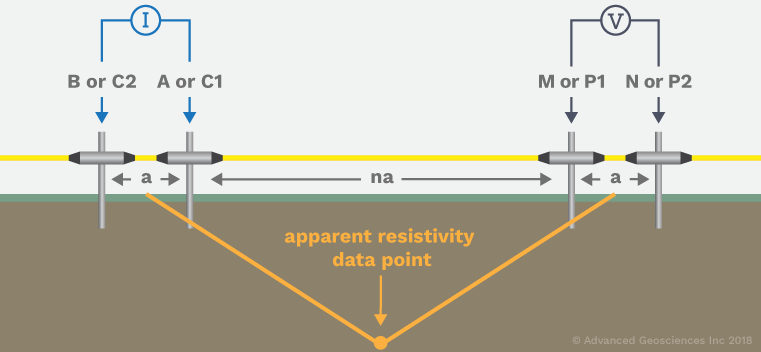
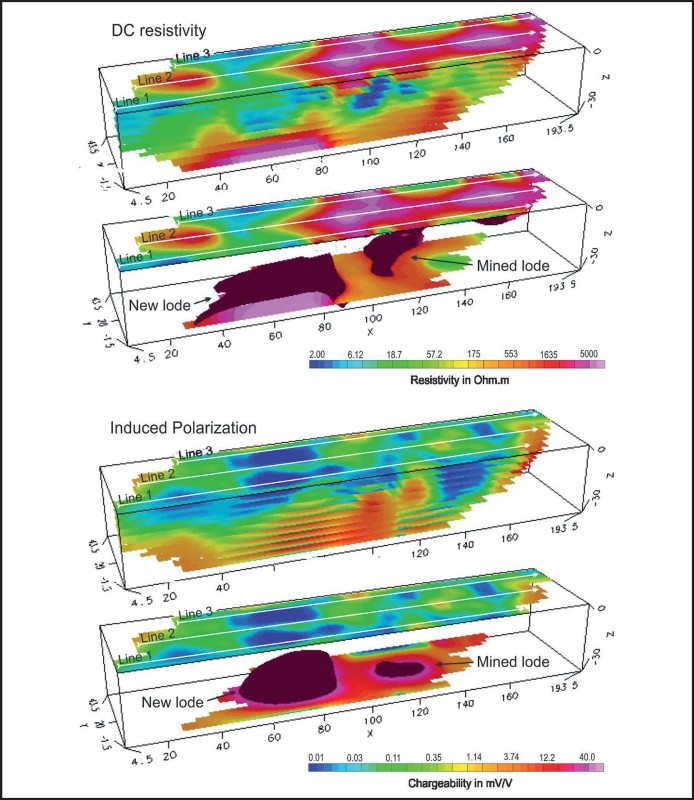
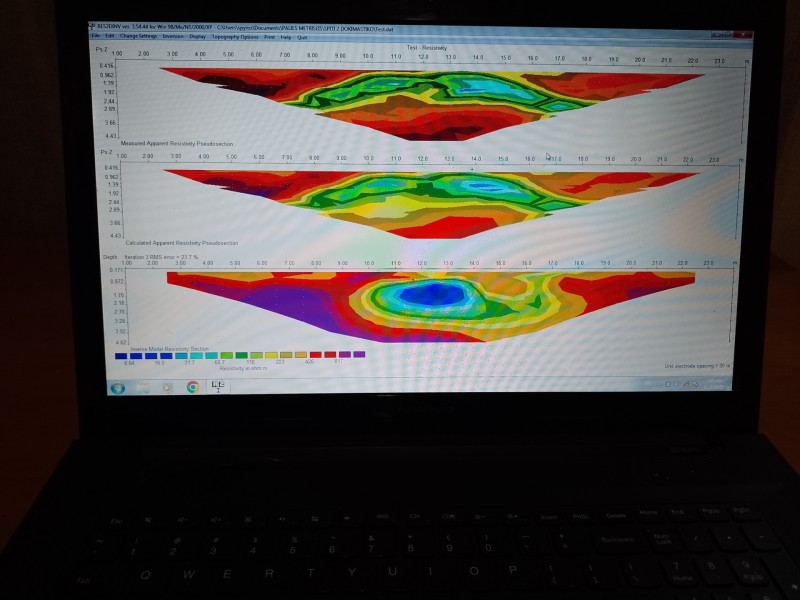
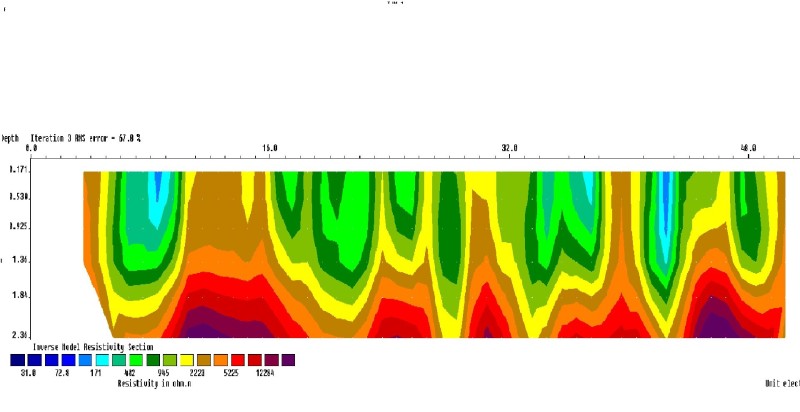
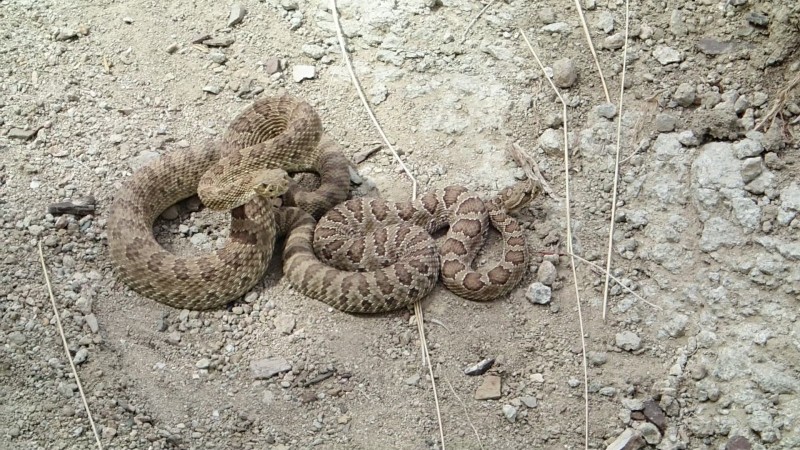
Earth Resistivity
in Detector Prospector Forum
Posted
Yes....and it really isn't that complicated. We also did a simple 2 probe method, which pretty well matched the dipole setup. In the 2 probe you just drive two probes in the ground at whatever distance you want, and read the input voltage, and the current, and calculate the resistance. The advantage is greater depth. The depth with that setup is equal to the probe spacing, which is roughly double what you get for a given spacing with the dipole array . But, you don't get as much info about what's down there. However, as a quick method to see if there's an anomalously low resistance anywhere as you move along, it's not bad. I found a spot in Calif. near the Nevada border 2 years ago, that has a bunch of copper oxides at an open fault zone over a 50' area. That's a perfect spot for a 2 probe test. I'm going to center over the zone, and do even steps down to see if there's a copper lode hiding down in there. If I get a really low resistance at some point I can do a full array to see what it might be.
Jim